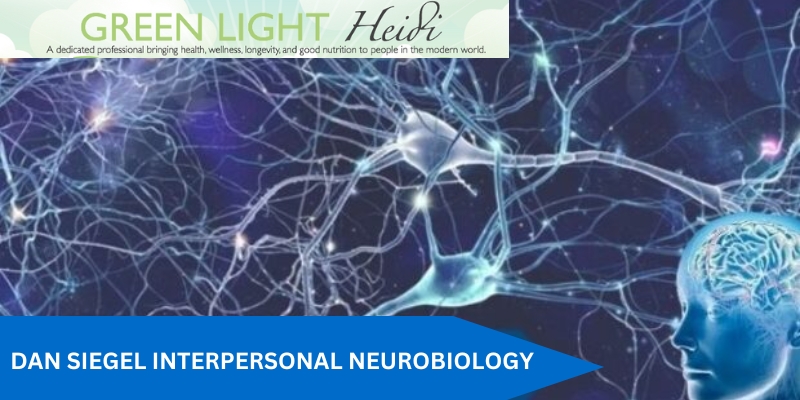How to Regulate Emotional Phases through Domains of Integration

Dan siegel interpersonal neurobiology has brought about a 360-degree turn in the way professionals used to facilitate the healing process in humans. Thanks to the scholar! Now there’s an enhanced and better approach to severe mental health conditions such as trauma, depression, etc. Interpersonal neurobiology stresses the importance of building healthy relationships with your surroundings to have a healthy mind.
Backed by clinical evidence, it’s not a belief but a universally accepted fact. In this guide, we’ll overlook the different domains of integration that will help you crawl through different emotional phases of your life.
- Consciousness Integration
The way we divert our attention toward things helps promote integrative alteration in our brains. Consciousness integrations facilitate skill-building and stabilizing attention. Further, it allows us to become more aware, which leads to the creation of change and choice. Therefore, the integration of consciousness is perceived as the foundation for the rest of the domains.
- Horizontal Integration
Since time immemorial, the left and right brains of humans have had individual yet complementary functions. If anyhow, the connection between them is disturbed, it might lead to the dominance of one side of the brain on the other. Consequently, it might adversely affect richness, creativity, and complexities resulting from both sides working together.
Siegel interpersonal neurobiology stresses the importance of integrating our minds to develop a whole new coherent sense of life. Plus, it gives us a deeper insight into the nonverbal aspect of ourselves as well as others.
- Vertical Integration
Vertical integration can be used as a counter back to trauma or make survival possible in an emotional state. We tend to ignore our bodily sensations and senses in a state of detachment from the world. We ignore that our body is telling us to live life to its fullest.
Through vertical integration, we can make ourselves more aware of our surroundings. It helps develop better intuition that contributes to saving our lives.
- Memory Integration
Memory integration is yet another essential domain of interpersonal neurobiology. Humans first process and then encode all of their life experiences in different memory layers. The puzzled implicit fragments of memory are further organized and converted into explicit memories. Explicit memories are the autobiographical and factual data that we are aware of.
The more we can assemble the puzzling piece and make it explicit, the better the chances are to live life to its fullest and be in the present.
- Narrative Integration
We construct stories that make sense by weaving the narrator function of our left hemisphere with the autobiographical memory stored in our right hemisphere. Research suggests that our attachment to our children is secured by narrating stories from our childhood to them.
We may free ourselves and, ultimately, our children from the cross-generational patterns we want to avoid by identifying barriers to narrative integration and then taking the required steps to remove them.
- State Integration
Our individual experiences roll out our fundamental needs and drives: autonomy and freedom, solitude and closeness, mastery and caregiving, and others. These states might conflict with each other at times- confusingly and painfully.
Dan Siegel interpersonal neurobiology highlights the fact that our mindsight enables us to perceive these stages as healthy aspects of a layered life. Awareness ensures we don’t suppress or reject these parts of us for inner stability.
- Interpersonal Integration
At their best, our resonance circuits allow us to see the inner world of others, and in return, they incorporate us into their inner world and carry us along even while we are far away. Mindsight allows us to analyze how past situations are shaping our present relationships. Further, it allows us to open ourselves to others safely.
Only then can we establish that intimate connection in any relationship without losing our sense of freedom and individuality. Being loved and loving others becomes easy without compromising ourselves completely.
- Temporal Integration
Yet the last but not the least domain that Siegel interpersonal neurobiology speaks of is temporal integration. Our prefrontal cortex has made us aware of our ability and sense of time that’s quite in the animal kingdom. It enables us to foresee death and its ability to undo everybody we love, including ourselves. Some of the profound challenges that the prefrontal cortex presents us are: mortality, uncertainty, and impermanence.
Here, obsessive-compulsive disorder suggests that our survival drive tends to dominate. And sometimes, it’s so intense that we are either terrorized or paralyzed by the idea. Here, temporal integration steps in to allow us to establish comforting connections and live life with the utmost ease.
Conclusion
Mindsight takes us back to the integration. Our job is to identify the roadblocks to the various domains of integration and liberate the natural drive of the human mind to heal. Psychologists incorporate interpersonal neurobiology to integrate the brain, mind, and relationships. The connection between the three will help enhance our well-being.
Green Light Heidi is offering courses that lead to the path of self-enlightenment. It’ll you in on how to incorporate the use of interpersonal neurobiology to improve and heal. The course will take you through a detailed process of teaching each and every domain and its use. For any further queries, you can contact us via mail at [email protected]

Comments